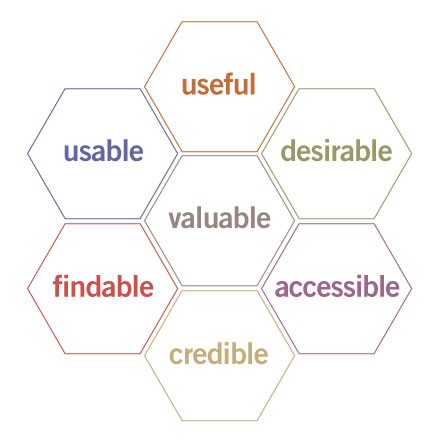As a certified data and tech geek, and a wannabee runner, (slow runner at least), I am totally fascinated and interested in the launch of Microsoft Band, the software giant's new wearable fitness tracking device.
What interests me with the Microsoft take on wearable fitness tracking, which admittedly is not really in and of itself all the groundbreaking, we have had Fitbits and Jawbones and all kinds of other fitness and activity tracking devices for some time now, is how the folks at Redmond are talking about and developing the Band as much more than a personal activity tool, but rather as a productivity tool.
Read the (long, but interesting) post on Microsoft's News Center describing the new Band. The word 'productivity' pops up at least a half dozen times in the piece, (including in the title). Microsoft is still and probably will always be known as the company that makes the software most of us use to do work. Word docs, Excel spreadsheets, PowerPoints - heck I bet 80% of the people reading this blog use Exchange/Outlook for your business email.
Microsoft is about WORK. Getting work done even in 2014 still often equates to dragging your mouse and keyboard around some kind of Microsoft product.
So the fact that Redmond is diving into wearable/fitness tech, and openly talking about Productivity in that conversation is eye-opening. Here is just one representative reference to work and productivity in the Microsoft piece:
Microsoft Band’s cutting-edge continuous heart rate monitoring provides a detailed calorie count and sleep quality measurements. With the inclusion of intelligent personal assistant Cortana on Windows Phone 8.1, the band also offers hands-free access to the web and your most important correspondence whether you’re at the office or at the gym.
And here is one more snippet:
With the inclusion of productivity and communication features, they aimed to make not only a wearable personal trainer but also a wearable personal assistant. Productivity features would deepen the device’s connection with the consumer and free them from having to keep their eyes glued to a smartphone.
While the initial interest and appeal for a wearable like Microsoft Band might be at the individual consumer level, it is pretty easy to see a (near) future when the deep integration of a fitness/activity tracker with the workplace productivity tools that Microsoft has long dominated, would present a compelling value proposition to organizations. I can easily see a day where organizations pass out a Microsoft Band along with a company-issued laptop and corporate Email account. The potential for not only Level 1 benefits (more exercise by employees, better dietary/sleep habits, weight loss, etc), but deeper insight into how work patterns, activities, schedules, and even personal interactions impact employee health and well-being will just be too tempting to pass up.
Think for a second about the potential benefits for organizations of deeper integration between wearable fitness/activity trackers and the tools we are used to using at work - Email, Office docs, even IM and collaboration tools.
I can think of at least three really compelling use cases for this kind of integration right off the top.
One - how work itself effects employee health. Does someone's heart start racing in every staff meeting? Do they begin to get twitchy when called upon to present to a group? Does a certain interaction with a colleague result in three nights of poor sleep? And then what can organizations then do to better understand and potentially align individuals with projects and team members that can aid their ability to perform, while not making them crazy? How do schedules, (and in particular over scheduling), impact employee health and activity? Do we need to be more mindful of how overworked and over scheduled many of our people are?
Two - Insights into who in the organization inspires, challenges, and lifts people up, and who serves as essentially the corporate buzzkill? Imaging a meeting with 10 people inside, all wearing the MS Band. One person dominates the meeting, maybe it is the boss, and immediately after the other 9 people begin to show signals of nervousness, irritability, or even lethargy. Maybe email and collaboration patterns in the team begin to show signs of changing as well. Perhaps some members of the team skip their normal workouts for a day or two in the aftermath. Maybe some folks don't even turn up the next day.
Three - How much (or little) are employees actually disengaging from work to do things like exercise and even to just relax without worrying about and reading/responding to emails and texts? Activity tracking data should show a fairly regular and consistent pattern of employee activity and (hopefully) reveal that people are getting enough activity and also are not trapped to their work 24/7. What is the relationship between extended periods of downtime and subsequent well-being and productivity? Do we need to be more adamant that people actually take their earned PTO in order to ensure better long-run health and on the job success?
Ok, I could be jumping the gun on this. But I can't help but see a potential future where activity/fitness/health tracking information becomes a vital input into overall workforce management and planning. Sure, some folks will scream about privacy and employer intrusion into personal areas where they should not be. And while that is a valid concern, if the macro trends hold up, and people continue to be more open and public about their lives, then a future where employees physiological responses and activities to work and the workplace are just another set of data points to overall HR/Talent/Business planning seems almost inevitable. Besides, employers 'spying' on employees did not just get invented with fitness trackers and it will be with us long after we all toss out our Fitbits.
So what do you think?
Does Microsoft Band signal something potentially really important for HR and workplaces?
Or am I naive to the extent to which people will not want to share this personal data with their employers?


 Steve
Steve


